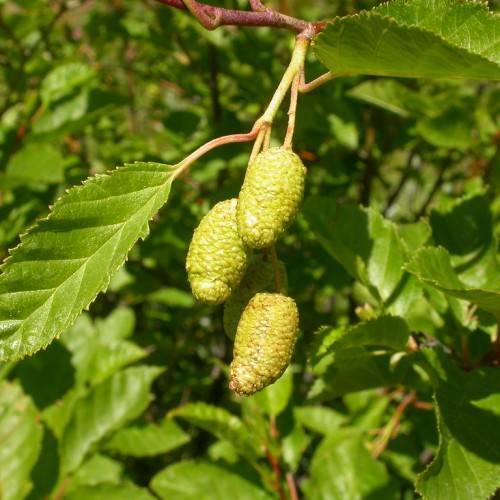
American Green Alder
Alnus viridis
Cycle:
Perennial
Watering:
Average
Hardiness Zone:
Sun:
Full sun Partial sun Shade
Soil:
Sandy,Loamy,Rocky
Cones:
Yes
Leaf:
Yes
Growth Rate:
Moderate
Salt Tolerant:
Yes
Care Level:
Medium
watering
American green alder should be watered once a week or when the top inch of soil feels dry to the touch. When the plant is watered, enough water should be used to make sure the soil is moist all the way through, but not wet. Too much water can lead to root rot, so it is important not to water too often or too much.
sunlight
American Green Alder thrives best with 6 to 8 hours of full sun each day. When planting, place the tree in an area that receives at least 8 hours of direct sunlight each day, but avoid too much afternoon sun, which can be damaging. It is best to provide a little morning sun, which will help the tree stay cooler in the heat of the afternoon. American Green Alder will also tolerate shade and partial sun, but it may not produce as many berries and nuts as it would in a sunny location.
pruning
American Green Alder should be pruned lightly throughout the growing season to control the size and shape of the plant. Prune off dead, crossed, or otherwise broken branches as needed. More extensive pruning can also be done in late winter or early spring as the plant is coming out of dormancy. Focus on removing dead, diseased, crossing, and otherwise damaged branches, as well as any suckers or errant shoots. Aim to maintain the natural shape of the tree, but do not over-prune as this can damage and weaken the plant.
